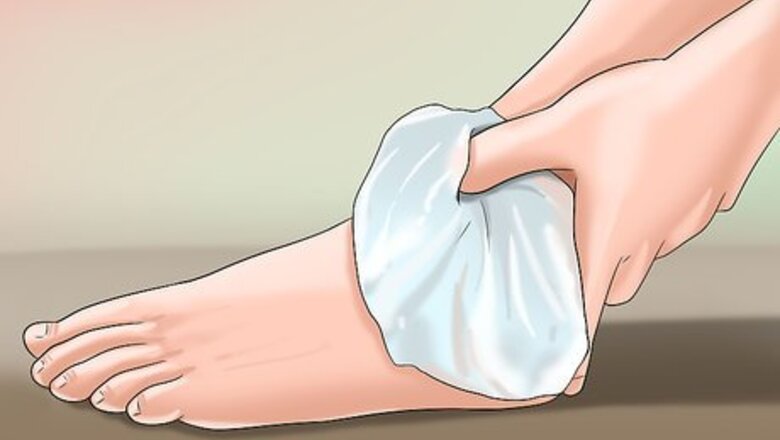
views
X
Research source
An excessive amount of uric acid in the body will cause pain, redness, and swelling.[2]
X
Research source
Because attacks of gout pain often occur at night, it's a good idea to know how avoid a gout flare up and how to relieve the pain once it begins.
Treating Acute Pain to Help You Sleep
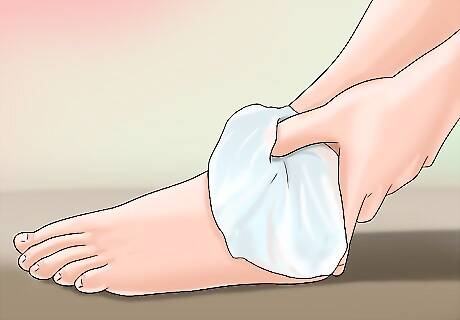
Ice the area. In general, the first 36-48 hours of a gout attack are the most painful but you can relieve the initial pain and make sure you are doing all you can to end the gout attack as soon as possible. You can relieve some of the pain of gout by icing the joint. Use an ice pack wrapped in a towel and apply to the affected area for 20-30 minutes every hour that you are awake. Keep the affected joint elevated as much as possible while you ice it. This will help to avoid the blood settling in the area that is being iced.
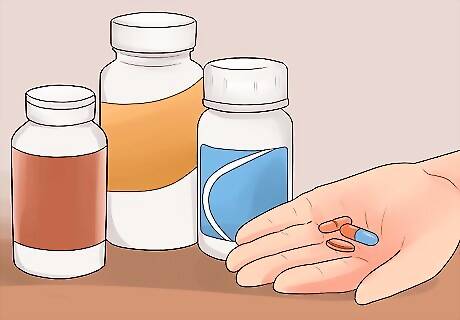
Take over-the-counter pain relievers. Your can take common pain relievers, such as ibuprofen (eg. Advil, Motrin IB) and naproxen (eg. Aleve). Use any OTC NSAIDs for as short a time as possible. Long-term NSAID use can increase the chances of a heart attack or stroke and can also increase the risk of ulcers and bleeding. Make certain you follow manufacturer’s directions exactly. However, avoid any aspirin or topical aspirin products (eg. Aspercreme or any topical cream with salicylates). Aspirin products can cause more uric acid to deposit in the joints. Tylenol (acetaminophen) is not an anti-inflammatory medicine and is not likely to help. You could also take colchicine, but you may need a prescription from a doctor for that medication. For chronic control of gouty flares, you should take allopurinol, which decreases the amount of uric acid in the body.

Try a topical pain-relief cream or gel. Topical analgesics have been shown to be very effective, especially for joints such as the toes, ankles, knees, elbows and hands. For example, Voltaren gel is a prescription topical NSAID that can greatly reduce gout pain. Talk to your doctor about the use of Voltaren gel Over-the-counter topical treatments that may be helpful include: Capsaicin cream: Capsaicin is a substance derived from cayenne peppers that depletes Substance P — a pain signal. Make sure you wash your hands well after applying capsaicin — it can cause an intense burning sensation, especially if it gets near your eyes. Homeopathic creams: These include Topricin, which contains a mixture of homeopathic pain remedies. Gout relief ointment: Tanza Botanicals has a Gout Relief Ointment that is made of a number of pain-relieving herbs.
Preparing to Sleep While Having a Flare Up
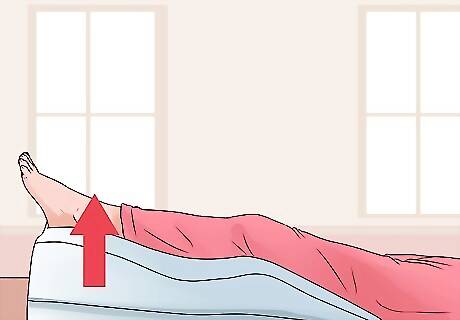
Make yourself as comfortable as possible. Gout often flares up at night, at that point, the weight of a blanket on a gouty toe, for example, can be extremely painful. If you know this is the case for you, and you have been having flare ups, then avoid that discomfort by turning up the heat in your bedroom and keep the blankets off your affected area. You may be more comfortable, at least the first night, sleeping in an armchair or a recliner where you can keep the joint elevated. If the gouty pain is in your toe, ankle, or knee, it may be best not to use a blanket or to tent the area over the joint if you can.
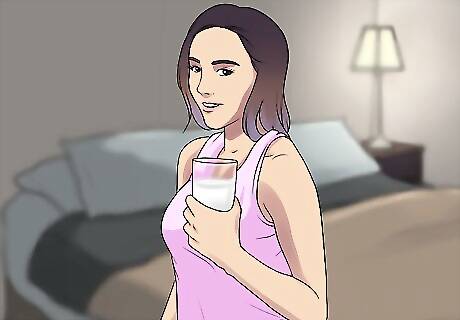
Get sleep conditions treated. Gout is also associated with sleep conditions, such as sleep apnea. If you have been awakened at night by gout in the past, talk to your physician about possible treatments for a sleep condition. Make sure you avoid tobacco, in addition to avoiding any purine-rich food or beverage. Some purine-rich foods are red meats, anchovies, shellfish, fatty fish, asparagus, spinach, and most dry beans. Avoiding these foods will help you sleep more soundly. Keep drinking plenty of water. While this won’t necessarily help you sleep in the immediate sense, but it will help flush out the uric acid that has built up. Drinking a cup of chamomile tea before bed can help you relax and get ready for sleep.
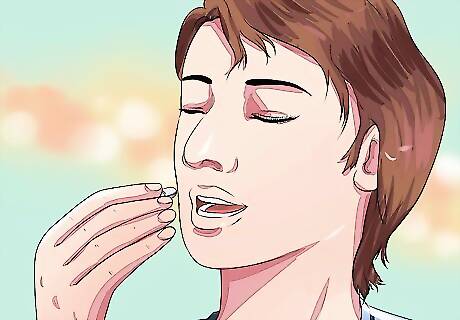
Take any medication about an hour before you plan to get to sleep. This gives the medicine some time to become effective. For example, if you are using topical pain relief, apply it about 20-30 minutes before you plan to sleep. If you are taking NSAIDs, try to take them with food, such as yogurt or peanut butter crackers. Eating will help to coat your stomach and reduce the likelihood of your developing ulcers or a gastrointestinal bleed.
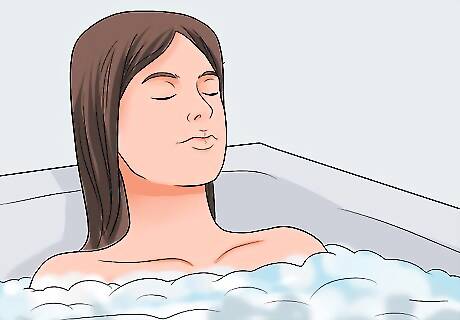
Practice good sleep hygiene. Avoid loud noises or bright lights and play calming music or “white noise” to help you relax. If you can, take a warm shower or bath before bed. This can help you relax even more. Get up and go to bed at the same time every day. Don’t force sleep; if you can't fall asleep, do something else until you're tired. Resolve conflicts before you go to bed. Don't have any alcohol or tobacco before you go to bed. Try to exercise in the morning, and do not exercise fewer than four hours before you go to sleep.
Treating Gout Medically
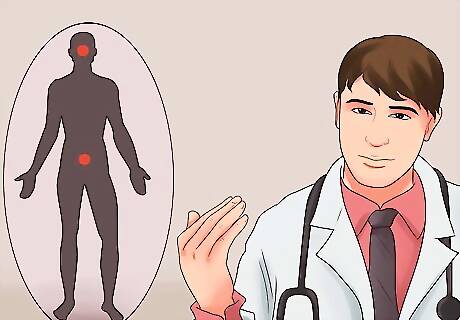
Get a diagnosis. It is important to consult with a physician if you think you have gout. They can help to relieve your symptoms and make recommendations for treatment. Gout is usually diagnosed simply by reviewing the symptoms and medical history. Your doctor may also take a sample of joint fluid to look for characteristic uric acid crystals, run a blood test to measure the amounts of uric acid, or get an X-ray, ultrasound, or CT scan, though the imaging tests are rarely used.
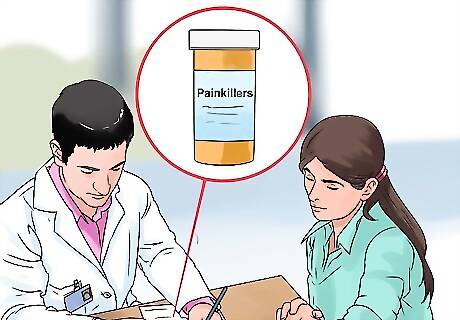
Take prescribed medication. The medical treatment of gout uses medications that block the production of uric acid (eg. allopurinol (Aloprim, Lopurin, Zyloprim) and febuxostat (Uloric), ) or increase the excretion of uric acid (eg Probenecid (Probalan)) As you might suspect, these medication can cause significant side effects: Allopurinol can cause skin rashes, cause anemia, and can sometime increase joint pain. People of Asian and African heritage have a higher risk of skin rashes with allopurinol. Allopurinol is used to treat only chronic gout. It does not treat acute gout. If you are suffering from acute gout, you should take colchicine to relieve your symptoms, as allopurinol will not be very effective. Febuxostat can significantly alter liver enzymes. This drug is also used only for chronic gout. Probenecid can cause headaches, joint pain, and rapid breathing. Other medications used include prescription NSAIDs such as indomethacin (Indocin) or celecoxib (Celebrex). Steroidal anti-inflammatory agents and colchicine (Colcrys, Mitigare) can also be prescribed. Colchicine is an older drug that is less frequently used because of significant side effects.

Follow your doctor's recommendations for lifestyle changes. In addition to medication, treating gout and the pain associated with gout requires changes to your diet and lifestyle. Your doctor should have some suggestions for these lifestyle changes so that you can limit pain and get some sleep.
Making Dietary Changes
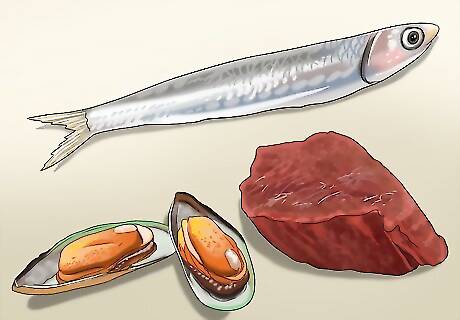
Avoid foods that increase your chances of an attack. If this is your first attack or if you haven’t already made dietary changes, it's time to reduce your intake of purine-rich foods. Purines are broken down in your body to produce uric acid. Avoid these foods completely during a gout attack and for at least 1 month following the attack. After you recover, do not exceed more than 2-4 servings of any of these foods per week. They include: Alcohol Sugary soft drinks Fatty foods, such as fried foods, butter, margarine, and high-fat dairy products. Organ meats (liver, kidneys, sweetbreads (brain)). These foods have the highest levels of purines. Beef, chicken, pork,bacon, veal, venison. Anchovies, sardines, herring, mussels, codfish, scallops, trout, haddock, crab, oyster, lobster, shrimp
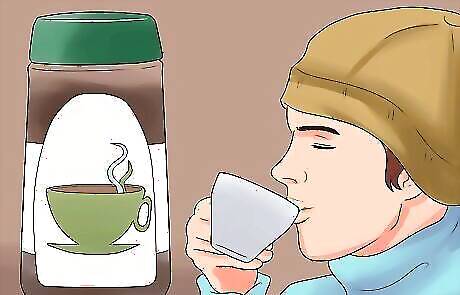
Increase your intake of foods that help eliminate gout. In addition to avoiding certain foods, you can also increase foods that can protect against high uric acid levels. These include: Phytate rich foods: Phytate is a substance that seems to prevent the formation of many types of kidney stones, including those with uric acid. Phytate rich foods include beans, legumes, and whole grains. You should include 2-3 servings of beans, legumes, and grains every day. Green tea: Green tea decreases the risk of uric acid-containing kidney stones. Drink about 2-3 cups of green tea a day. Calcium-rich foods: Calcium-rich foods to include in your diet are low-fat dairy products. Tart cherry juice: Tart cherry juice has long been used in naturopathic medicine to treat gout and kidney stones. If you have an attack of gout, drink 3-4 8 ounce glasses or organic tart cherry juice every day. This should provide some relief within 12-24 hours.

Take supplements recommended for gout. These supplements will not immediately help you sleep, but they will help longer-term to reduce the frequency and the duration of a gout attack. If you are already on prescription anti-gout medications, speak to your physician before taking any supplements. Also, follow manufacturer’s recommendations for dosing for any supplements. Helpful supplements include: Omega-3 fatty acids, especially EPA. Bromelain is an enzyme derived from pineapples. It is often used to help treat digestive issues, but in gout, it is used as an anti-inflammatory agent. Folate, a B vitamin, inhibits the same enzyme (xanthine oxidase) that the anti-gout drug allopurinol inhibits, thus reducing uric acid levels. Quercetin is a bioflavonoid that also inhibits xanthine oxidase. Devil’s claw (Harpagophytum procumbens) has been traditionally used to treat gout by reducing uric acid levels. Anyone with gout should avoid supplemental Vitamin C or niacin. Both these vitamins may increase uric acid levels.
Identifying Gout
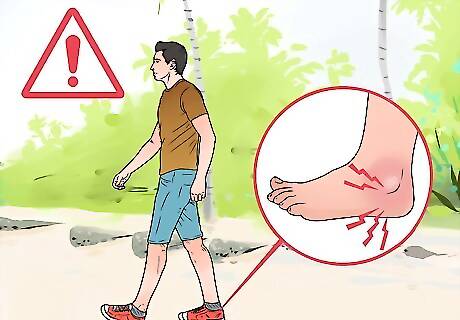
Look for the symptoms of gout. The symptoms of gout usually appear suddenly and often occur at night. The symptoms of gout include: Intense pain at joints. Most commonly at the base of the big toe. The joint involved can also be the feet, ankles, knees and wrists. Gout usually only affects one joint at a time, but can affect many joints, especially if the underlying cause of gout is not addressed. Joint discomfort after the initial attack. Redness and other signs of inflammation, for example warmth, swelling and tenderness. Decreased ability to move at the affected joint.
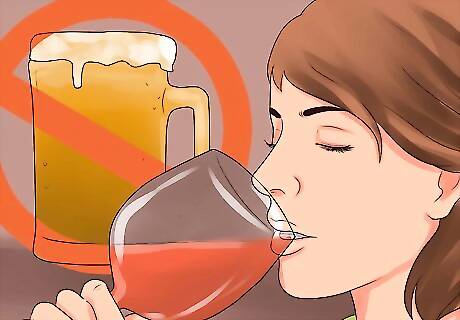
Assess whether your diet may promote gout. A diet high in purine-rich foods and beverages with high levels of fructose (sodas and soft drinks) can put you at risk for gout. The foods that commonly act as triggers for gout include: Beer and liquor Sugary soft drinks Fatty foods (fried foods, butter, margarine, high-fat dairy products) Organ meats (liver, kidneys, sweetbreads (brain)) Beef, chicken, pork,bacon, veal, venison (Red meats are high in purines. White meats such as chicken and pork are low and in moderation are safe. Directly from gout pamphlet from dietary articles) Asparagus is also high in purines. Anchovies, sardines, herring, mussels, codfish,scallops, trout, haddock, crab, oyster, lobster, shrimp
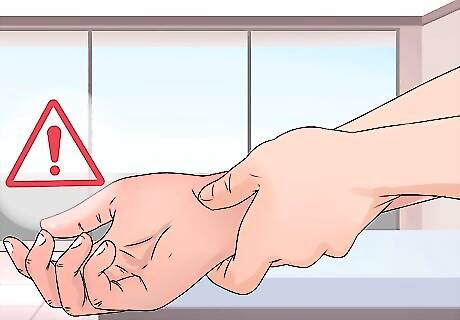
Assess your risk factors for gout. Gout can occur in all ages, but most commonly in adult men and postmenopausal women. However, there are factors other than diet can have a big impact on whether you get gout or not. These include: Obesity or being overweight Untreated high blood pressure, diabetes, metabolic syndrome, heart and kidney disease Medications, including thiazide diuretics (water pills), low dose aspirin, immunosuppressant drugs Family history of gout Recent surgery or trauma: If you control the amount of purines in your diet, but drop a heavy object on your toe, this could still trigger an acute attack.











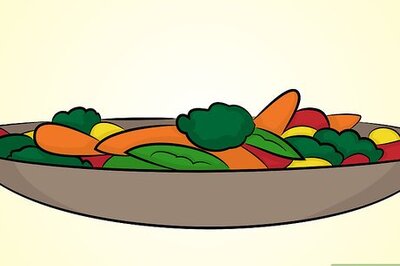
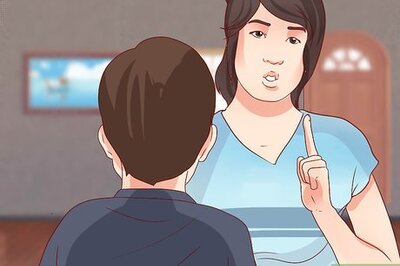







Comments
0 comment